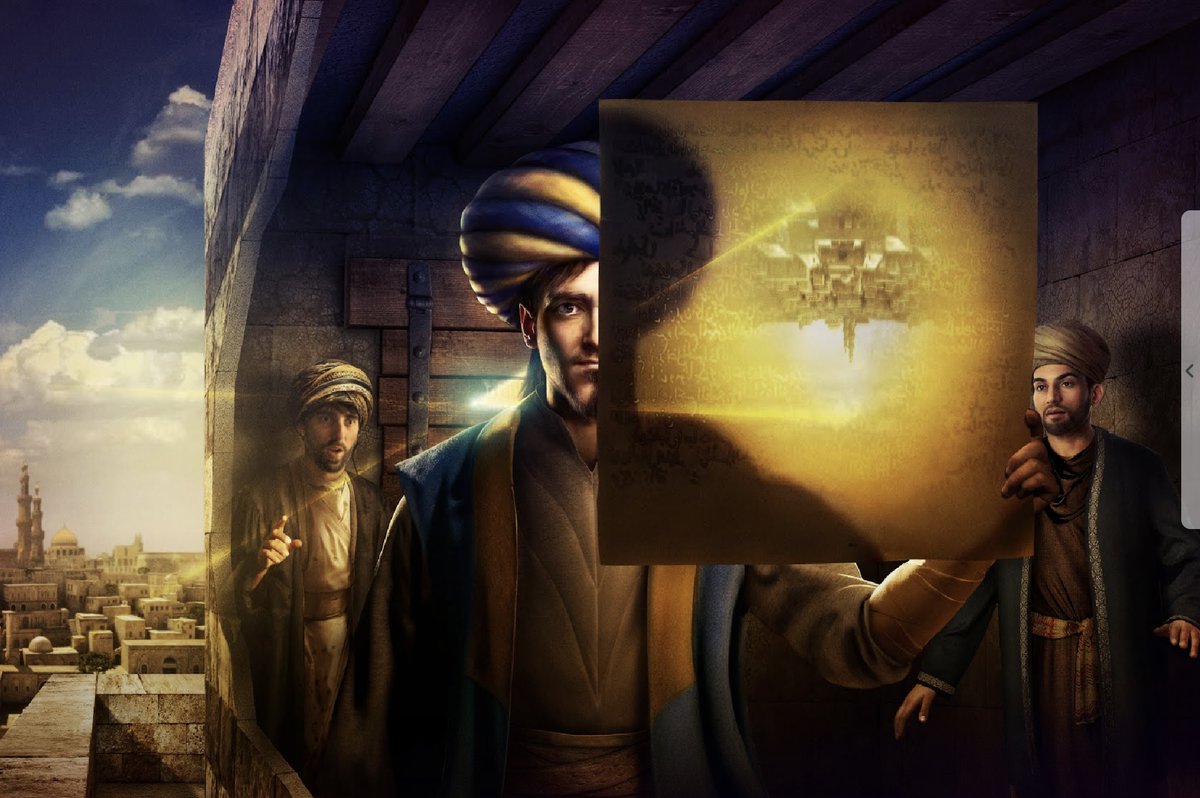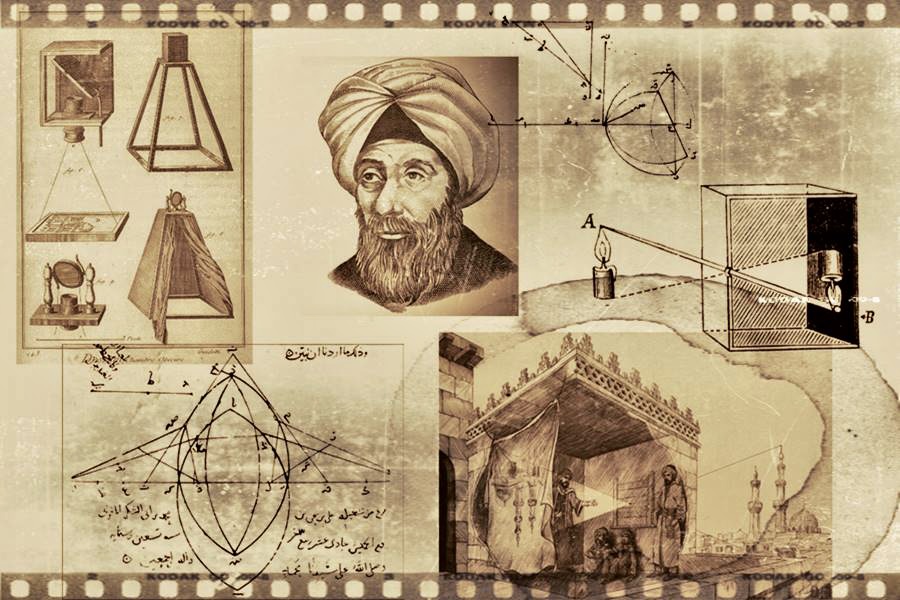From selfies to family photos, our phone cameras have enabled us all to become photographers. But, did you know a Muslim scientist in the 10th century, Ibn al-Haytham invented the camera obscura, the earliest avatar of the modern digital camera
For #WorldPhotographyDay a thread
For #WorldPhotographyDay a thread

1/ Born in Basra, Iraq, around the year 965, Al-Hasan Ibn al-Haytham, Latinised as Alhazen, was a pioneering scientific thinker who, from his observation of light entering a dark room made major breakthroughs in understanding light and vision. 

2/ Ibn al-Haytham set new standards in experimental science and completed his influential Book of Optics sometime around 1027. He wrote at least 96 books. His most famous is the Book of Optics or Kitab al-Manazir which was translated into Latin and became very influential. 

3/ Ibn al-Haytham studied what eyes are made of and named important parts of the eye. This sketch of the human optical system based on the original drawing from the Book of Optics shows how eyes are connected to the brain. 

4/ He experimented in a dark room he called Al-Beit Al-Muzlim or the Dark House. The dark room later came to be known as a camera obscura. 

5/ Camera obscura, in simple words, means a dark chamber. “Camera” is Latin for chamber and “obscura” is Latin for dark; a darkened room in simple words. A camera obscura can be a darkened room or even a small dark box with a small opening to allow light to come in. Since light travels in straight lines, the light projected off the objects outside the box will then project itself inside the camera obscura.

6/ Ibn al-Haytham studied how light moves and did tests using lenses and mirrors. He studied reflection and refraction concluding that light refracts when it moved through different materials. 

7/ It depicts his story and discovery, made in a dark room that light coming through a tiny hole projected an image of the outside world onto the dark wall opposite the hole - similar to how we see.
In Egypt, Ibn al-Haytham focused on making major breakthroughs in understanding light and vision. During that time, he made his greatest scientific discovery. While sitting in a dark room, the story goes, he noticed a bright light on the wall that turned out to be an image of objects outside his room.
In Egypt, Ibn al-Haytham focused on making major breakthroughs in understanding light and vision. During that time, he made his greatest scientific discovery. While sitting in a dark room, the story goes, he noticed a bright light on the wall that turned out to be an image of objects outside his room.

8/ Following his dark room observation, Ibn al-Haytham made more experiments and understood: light bounced off the objects outside, travelled through the hole in the wall of the room, and made the image. He saw comparisons to the human eye – the dark room was like an eye and that is how people see.

9/ Ibn al-Haytham researched further to fully understand how our eyes worked. He studied the eyes closely and found and names important parts of the eye like the cornea. 

10/ After he died around the year 1039, Ibn al-Haytham’s Book of Optics was translated into Latin, passing valuable knowledge on to scientists leading the European Renaissance. Among those influenced by his work and methods were Italian polymath Leonardo da Vinci, German physicist Johannes Kepler and English scientist Roger Bacon.

11/ The camera we use to capture life’s finest moments would not have existed had it not been for Ibn Haytham’s revolutionary research. Prior to Ibn Haytham, many great thinkers wrote extensively and elaborated on the visual theories that were present but no real groundbreaking progress was made.

12/ Ibn Haytham was the first to explain that vision occurs when light reflects and bounces off an object & then passes to one’s eyes. So the next time you use your smartphone to take a selfie, a breath-taking scene or a photo at a family reunion, just remember that Ibn Haytham, a Muslim scientist, made it all possible.

• • •
Missing some Tweet in this thread? You can try to
force a refresh

 Read on Twitter
Read on Twitter




















